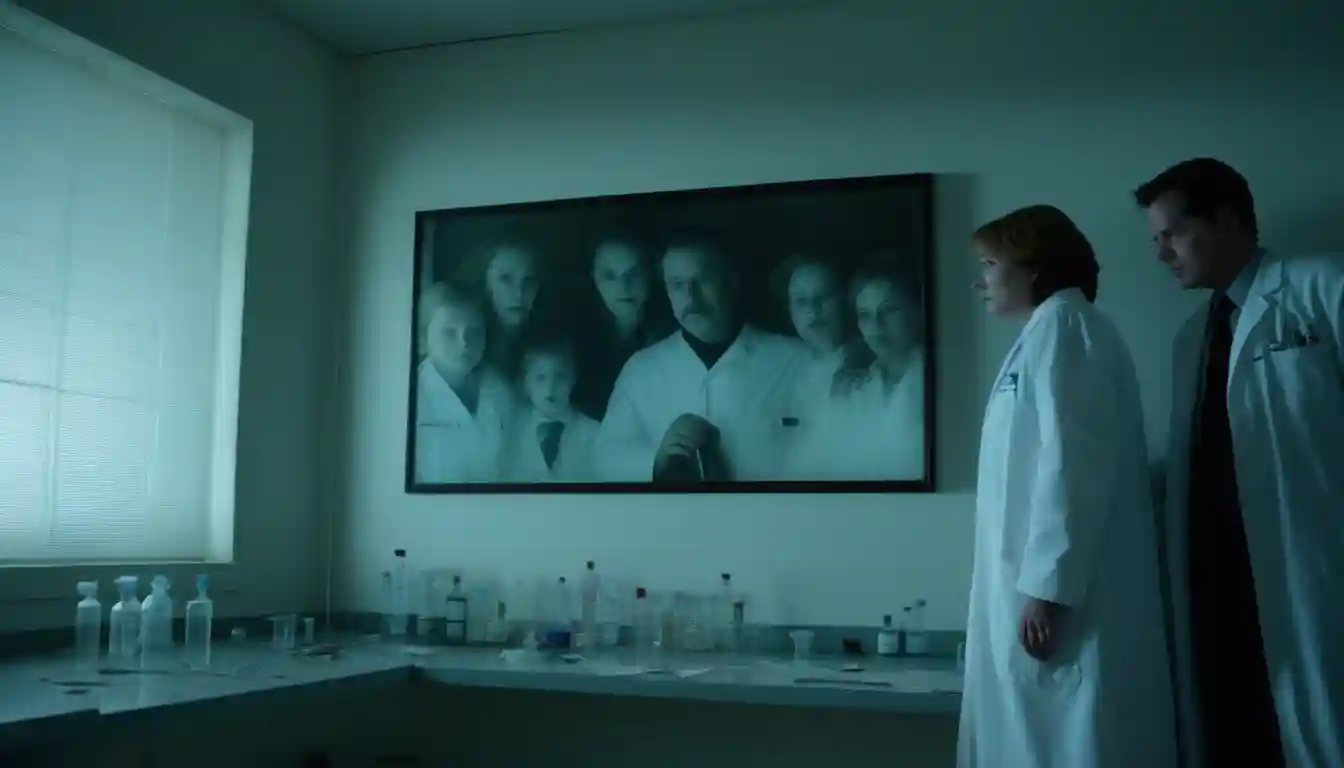
Third Death Sends Sarepta's Gene Therapy Empire Crumbling
Fatal Blow: Third Death Sends Sarepta's Gene Therapy Empire Crumbling
A stark silence has fallen over the once-promising frontier of gene therapy for muscular dystrophy as Sarepta Therapeutics faces an existential crisis. The company's groundbreaking treatments—once heralded as miracle cures for devastating muscle-wasting diseases—now stand at the precipice of regulatory oblivion following a third patient death.
The latest casualty, a 51-year-old man with limb-girdle muscular dystrophy who received Sarepta's investigational therapy SRP-9004, died of acute liver failure just 80 days after treatment. This death follows two earlier fatalities of adolescent males with Duchenne muscular dystrophy who had received the company's FDA-approved therapy Elevidys.

"Three Strikes and You're Out": The Mounting Death Toll
The clinical timeline reads like a grim countdown. The first patient death occurred in March 2025, followed by a second in June. Both were non-ambulatory youth with Duchenne muscular dystrophy who had received Elevidys. Then came July's fatal blow—the death of an adult participating in a clinical trial for SRP-9004, Sarepta's experimental treatment for limb-girdle muscular dystrophy.
In all three cases, the cause was the same: catastrophic liver failure following treatment with Sarepta's gene therapies, which use an AAVrh74 viral vector to deliver genetic material.
"What we're seeing is a pattern that can no longer be dismissed as coincidence," noted one regulatory expert familiar with gene therapy safety profiles. "The consistent mechanism of liver toxicity across different patient populations suggests a fundamental problem with the delivery platform itself."
A Corporate Gamble in Defiance of Regulators
The FDA's response has been swift and severe. Officials have not only imposed a clinical hold on Sarepta's gene therapy trials but have also requested the suspension of Elevidys shipments and revoked the company's designation for its AAVrh74 platform technology.
In an unprecedented move that has shocked industry observers, Sarepta has refused to comply with the FDA's request to halt Elevidys distribution. This standoff between regulator and regulated has created a tension rarely seen in the pharmaceutical industry.
"This resistance to regulatory guidance places Sarepta in extremely treacherous territory," remarked a pharmaceutical policy analyst who requested anonymity. "The company appears to be gambling that the benefits of continued revenue outweigh the risks of further regulatory action—a calculation that history suggests rarely pays off."
Behind the Science: The Fatal Flaw in the Miracle Cure
Elevidys made history in 2023 as a groundbreaking gene therapy for Duchenne muscular dystrophy, a rare and fatal disease primarily affecting boys. Using the AAVrh74 viral vector, the one-time intravenous infusion quickly became Sarepta's flagship product despite controversy surrounding its approval based on limited efficacy evidence.
The scientific evidence now points to a probable causal relationship between the deaths and the therapy. Statistical analysis places the probability between 85-95% that the three deaths were caused by the AAVrh74-based gene therapies rather than underlying conditions or unrelated factors.
The mechanism appears to be a severe immune-mediated hepatotoxic cascade—essentially, the body's immune system mounting a deadly attack on the liver following exposure to the viral vector. This reaction is potentiated by large vector loads in patients whose bodies are already weakened by their primary condition.
Market Meltdown: Investors Flee as Future Darkens
The financial impact has been immediate and devastating. Sarepta's stock price plunged over 30% following news of the third death and the FDA's intervention. Trading data shows the price at $14.075, down $7.89 from the previous close, with intraday volatility ranging from a high of $19.37 to a low of $11.88.
The extraordinary trading volume of over 78 million shares reflects the market's panic as investors reassess a company whose future now hangs by the thinnest of regulatory threads.
The Patient's Dilemma: Hope vs. Risk
For the muscular dystrophy community, the crisis creates an agonizing dilemma. Elevidys represented a rare beacon of hope for those suffering from a disease with few treatment options. Now that hope comes with the knowledge of potentially fatal consequences.
"Families are caught between desperate need and legitimate fear," explained a patient advocate who works closely with muscular dystrophy patients. "When you're facing a terminal diagnosis, even significant risk can seem acceptable—but liver failure is a terrible way to die, and these families deserve transparent information to make truly informed choices."
Where Smart Money Flows: Investment Outlook Amid Uncertainty
For investors navigating this turbulence, the road ahead requires careful analysis rather than emotional reaction. Financial analysts tracking the situation suggest several possible scenarios, with most favoring a cautious approach.
The regulatory catalyst map reveals critical upcoming dates that could determine Sarepta's fate. An FDA mid-cycle meeting in August 2025 could send the stock plummeting another 30-50% if it points to withdrawal. An advisory committee meeting in October and a decision deadline in December represent additional high-volatility events.
The financial stress test projections paint a sobering picture. Even in a base-case scenario, adjusted EBITDA could fall to negative $350 million, with year-end cash at $1.1 billion and net debt potentially reaching $900 million within 12-24 months. This raises serious questions about the company's ability to service approximately $1 billion in convertible notes maturing in 2027.
Investment strategists suggest that long-term fundamental investors should consider stepping aside, with opportunities limited to tactical trades around regulatory announcements. The current enterprise value of approximately $6.2 billion appears disconnected from a bear-case discounted cash flow valuation of $3.5 billion.
For those seeking exposure to the rare disease space, alternatives with cleaner safety profiles may offer more sustainable growth prospects. Companies developing competing technologies that avoid AAV hepatotoxicity entirely—such as CRISPR-based approaches—could emerge as beneficiaries of Sarepta's troubles.
Investment Thesis
| Category | Details |
|---|---|
| Current Stock Info | Price: $14.075 USD (-0.36%, -$7.89 change) Open: $17.0 USD Intraday High/Low: $19.37 / $11.88 Volume: 78.4M Latest Trade: July 19, 2025 (02:15 UTC+2) |
| Investment Thesis | Rating: Under-weight / Event-Driven Trade Only Key Risk: ≥70% probability of Elevidys market withdrawal/restrictive REMS due to safety concerns (3 fatal liver failures). Potential 65% gross profit loss. |
| Financial Stress (2025e) | Bear Case: $0.1B Elevidys revenue, -$350M EBITDA, $1.1B cash Base Case: $0.6B Elevidys revenue, $50M EBITDA, $1.5B cash Bull Case: $1.7B Elevidys revenue, $550M EBITDA, $2.1B cash |
| Catalysts | Aug 25 ’25: FDA meeting minutes (Bear: stock -30-50%) Oct 10 ’25: FDA ad-com vote (Bear: withdrawal likely) Dec 19 ’25: CMC decision (Bear: stop-sell) |
| Valuation | Current EV: $6.2B Bear DCF: $3.5B (vs. Bull $8-9B) EV/Rev (Base): 6x (vs. orphan avg. 4x) |
| Key Risks | - Elevidys withdrawal collapses 80% NPV - $1B 2027 convertible debt refinancing risk - Competing therapies (e.g., CRISPR, REGENXBIO) |
| Trade Ideas | 1. Short SRPT vs. Long IBB (biotech ETF hedge) 2. Jan 2026 $5/$15 put debit spread 3. Call spreads on positive FDA ad-com outcome |
| Conclusion | Binary FDA-driven outcome. Expected value skews negative; equity at risk from refinancing needs. Preferred strategy: trade volatility, avoid long-term exposure. |
Disclaimer: Past performance does not guarantee future results. The analysis presented reflects current market conditions and may change with new information. Readers should consult financial advisors for personalized investment guidance.
A Watershed Moment for Gene Therapy Regulation
Beyond Sarepta's individual fate, this crisis represents a watershed moment for gene therapy regulation. The FDA's actions echo previous interventions in high-dose AAV situations that resulted in market withdrawals or prolonged holds.
With a regulatory environment showing "low tolerance for further morbidity," the implications extend beyond a single company to the entire gene therapy sector. The industry now faces the sobering reality that breakthrough technologies bringing hope to desperate patients must still meet uncompromising safety standards.
As one bioethicist put it: "Innovation without safety is not progress—it's experimentation. The true advancement of medicine requires both."